The common Return On Ad Spend (ROAS) benchmarks for digital marketing fall between 3.0 to 4.0. It means for every $1 spent on ads, you generate $4 in return.[*]
But average is never good enough for the team at AppSumo.
Thanks to the help of Nick Christensen (AppSumo’s Head of User Acquisition) and Jack Paxton from Top Growth Marketing, AppSumo managed to grow its Facebook ROAS to ~30 at its peak:
Today, AppSumo spends about $100,000 on Facebook every month and gets an 8x to 10x ROI.
So what did AppSumo learn from spending big bucks on Facebook every month?
- Always Know Your Numbers
- Plan Your Strategy Based On The Top-To-Bottom Funnel
- Quality Matters
- Keep An Eye On The Engagement
- Testing, Testing, and More Testing
Hey Sumo-lings,
If you run Facebook ads, you don’t want to miss this.
Early this year, I partnered with Jack to create a comprehensive guide on how the team at AppSumo managed to get CRAZY results from Facebook advertising.
This is only a small sneak peek of the PDF. In the PDF, you get to:
Learn the essentials every entrepreneur and marketer MUST know before investing in Facebook advertising.
Peek at the AppSumo process for creating and running Facebook ad campaigns.
Discover the 10 lessons AppSumo learned after spending $5 million on Facebook. (We share five of the lessons here.)
The BEST part? We’re offering it for FREE! Click the button below to get the PDF right now.
Download What We Learned: Facebook Advertising PDF1. Always Know Your Numbers
The biggest mistake marketers can make is to start running Facebook ad campaigns before figuring out their company's numbers. They come up with a budget, find out how much Facebook ads usually cost, and cross their fingers, hoping their campaigns beat the average.
That's a big No-No!
Having this data (especially your business growth and performance metrics) is extremely important when running Facebook ad campaigns. After all, advertising's a task that relies on data.
If you don’t know the numbers, how are you going to know what works and what doesn’t? And how do you know what you should optimize and what you should ignore?
Knowing your numbers comes even before you start investing in Facebook advertising. There’s no point in driving more visitors to your product if they don't convert. Jack calls this the leaky bucket.
Before you get started, here are the two key metrics you need to calculate to know if Facebook advertising is for you:
Website conversion rate. For every 100 visits to your site, how many purchases do you receive? Jack recommends hitting at least a 3% conversion rate before you consider driving traffic using paid advertising.
Average order value (AOV). This is the average value of each order that comes through your website. If you have a high conversion rate or a high margin, you can cover the cost you spend on the ads even when you have a low average order value. But generally, it’s never a bad thing to increase your average order value as much as possible.
After you calculate these numbers, you can start running ads and track your Facebook ad metrics.
Knowing these statistics gives you an idea of how many visitors you need to generate from your ad to hit your revenue goals.
For example, if your conversion rate is 3% and your AOV is $100, driving 1,000 visitors to your site will help you generate $3,000.
If you spend more than $3,000 to drive that 1,000 visitors, you lose money.
If you spend only $3,000 to drive that 1,000 visitors, you break even for your ads but will still lose money after accounting for other costs.
If you spend less than $1,000 to drive that 1,000 visitors, it’s very likely for you to get a net positive ROI running Facebook ads.
In short, these numbers give you the roadmap to engineer your Facebook ad strategy.
Notes: Which metric to track and optimize largely depends on the objectives of your campaigns — which we’ve covered extensively in the free PDF.
2. Plan Your Strategy Based On The Top-To-Bottom Funnel
New visitors are less likely to convert compared to returning visitors — you shouldn’t expect people to convert the first time they see your brand or visit your website (unless your product is an impulse buy).
To overcome that, it’s important to understand the concept of the top and bottom of the funnel.
At the very top of the funnel, the goal is to get someone to engage, click, and make a micro-commitment. For example, the AppSumo team runs this ad to give people who have never heard of the brand a better idea of what they do. The micro-conversion here is clicking “Learn More.”
Here’s a video ad they run to share how AppSumo was started. It shows new audiences the problem AppSumo helps solve before asking them to buy anything:
The bottom of the funnel (remarketing or hot traffic) then aims to drive conversion and ROI. Here, you want to optimize your campaigns for conversions and focus on metrics like Cost Per Action (CPA) and ROAS.
For AppSumo, the bottom-of-funnel campaigns promote the latest deals by retargeting visitors who have landed on the deal page (on AppSumo’s website) but haven’t purchased.
We recommend running remarketing campaigns to the bottom of your funnel first. This way, you get to convert hot visitors and get results (sales and revenue) quickly. When you’re ready to scale, invest in top-of-funnel campaigns so you have more hot visitors to convert in your bottom-of-funnel campaigns.
3. Quality Matters
It’s easy to say “quality matters.” In fact, everyone knows it.
Tracking the right metric for the type of campaign you run helps cut through the noise and tell the true story. If your ads don’t help you to hit your goals, they are NOT high in quality.
The team at AppSumo looks at ROAS when they try to measure how well the campaigns perform overall.
ROAS tells you how much you’ve generated for every $1 spent on Facebook ads. If your ROAS is less than 1, you’re losing money running ads. But it doesn’t mean you’re making a profit when your ROAS is more than 1. It only means you’re generating more money than the amount you spent on Facebook ads. You still need to account for other costs — hosting, people, office, etc. — you incurred running your business.
Most ROAS falls between 3 to 4. This means for every $1 they spend on Facebook ads, they generate $3 to $4 in returns. AppSumo got an average ROAS of 8.6 in its main ad account in the past two years.
So now, how do you improve your ads' quality?
Ads won’t convert if they don’t speak to the target audience. This happens when marketers don’t have a customer avatar (persona) in mind. Every ad AppSumo has created starts with a customer avatar. Here’s a template of how the team does it:
The customer profile helps streamline everything you need to create and run an ad campaign.
The next step is to have a creative brief. Just like how we came up with a content brief for every blog post at Sumo, AppSumo creates a creative brief for every ad they want to run. This gives the design team a clear idea of what to work on and helps to streamline communication.
You can also use the creative brief to make sure your design team gets all the specs right — especially when running an ad on multiple platforms (Facebook and Instagram) that requires different image sizes and resolutions.
Bonus: When you get started, it’s helpful to compare what others in your industry are doing. You can go to Facebook Ad Library and search for competitors you want to “spy” on.
Here’s Jack comparing AppSumo ads with other competitors and giving you a few tips on making sure that your ads are high in quality.
4. Keep An Eye On The Engagement
Facebook's biggest asset is its users. Not the advertisers, not you as a marketer. (except when you use Facebook as a user). They make more money when the users are happy and return to Facebook and interact with relevant ads. That’s where engagement comes in.
When Facebook first rolled out its ad platform, the ad algorithm was simply to get people to click on the ads. Today, it’s gotten more sophisticated, especially on tracking engagement, because that helps drive the right ads to the right users.
That being said, the more engagement you have, the more the ad platform will love you — which translates into lower CPMs (Cost Per 1,000 Impressions). Besides, having people engage with your ads (likes, shares, comments) means their friends may see the ads, too.
Note: If you’re running a top-of-funnel campaign to build higher brand awareness, engagement could even be the metric to judge if you have high-quality ads.
You can also use the engagement stats as a trigger to serve other ads. For example, AppSumo has a campaign targeting users who were engaged with its Facebook page in the past 60 days but haven’t visited the website or bought anything yet.
A similar example targeting users who watched at least 50% of any AppSumo video on Facebook:
Remember: It’s still important to get the fundamentals and the key metrics like your website conversion rate and ROAS right before you look into the engagement. It’s only worth optimizing when you have a working product, landing page, and conversion ads.
5. Testing, Testing, and More Testing
Testing is the most important part of running any paid marketing campaign.
If you’re on a small budget, you have to plan out your tests and make sure they’re actually worth testing. On smaller budgets, testing takes a lot longer, so think about your test and evaluate whether the results will really make a difference.
With a smaller budget, focus on testing things like:
Ad placements. Facebook news feed, Instagram feed, right column, etc.
Targeting. Interests, remarketing, lookalike audiences, etc.
Type of media. Image vs. video.
Type of creatives. Image with people using your product vs. image with only your product showcase.
On a larger budget, you could test different variations, since you have the time and resources. People might respond better to blue text on Instagram and yellow on Facebook.
You can do this in a regular campaign, set up a split test, or set up a dynamic ad. Here’s how AppSumo uses the dynamic ad to test two different ad creatives.
So think about your test and ask yourself a few questions.
Do I already have information (that makes a test unnecessary)? Think Google Analytics, store/purchase data, etc.
Will the results of this test have a large impact (e.g., a pricing or offer test will have a much larger impact on revenue than a color test)?
Can I afford to run this test for 2-3 weeks to collect enough data (100 clicks)?
Do I have a large enough dataset to draw a definite conclusion? Don’t make decisions based on a “lucky” conversion in three hours.
Answering them honestly can help you run better tests and save money in the process.
Find Out More Of What AppSumo Learned Spending $5 Million On Facebook
Ready to dive deeper? Jack and I want to show you more:
The 10 lessons AppSumo learned after spending $5 million on Facebook (we shared five here).
The essentials every entrepreneur and marketer MUST know before investing in Facebook advertising.
Peek behind the AppSumo process for creating and running Facebook ad campaigns.
Visit AppSumo to download the PDF today:



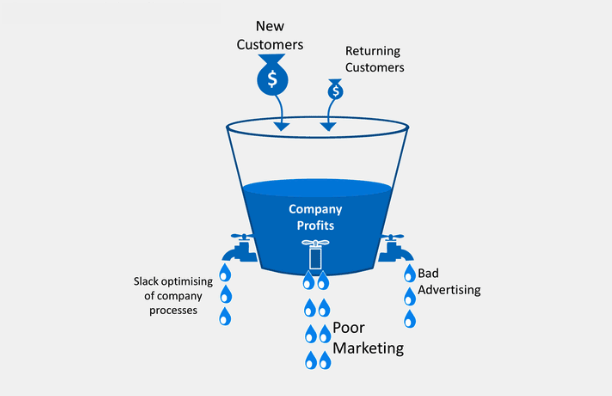
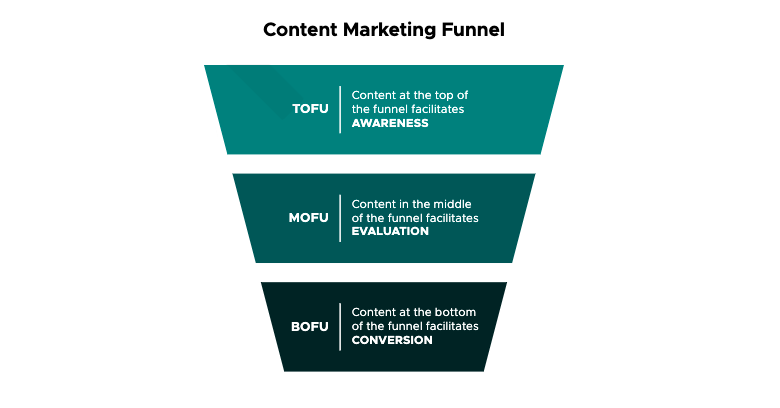
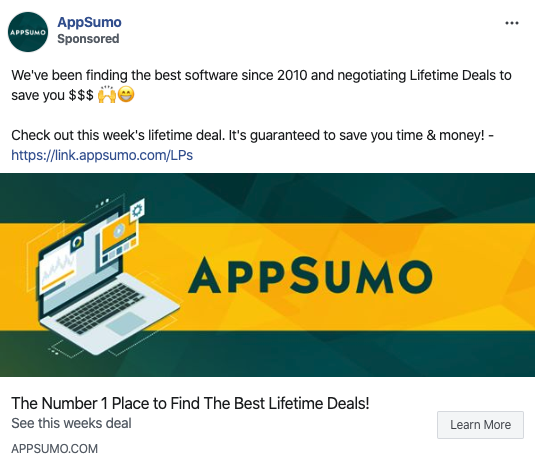
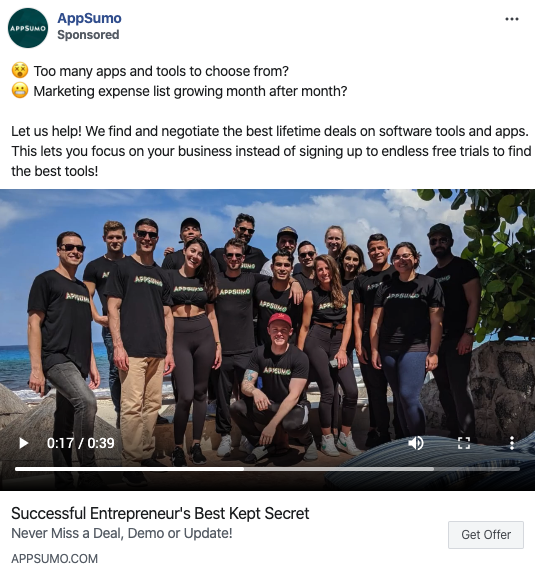
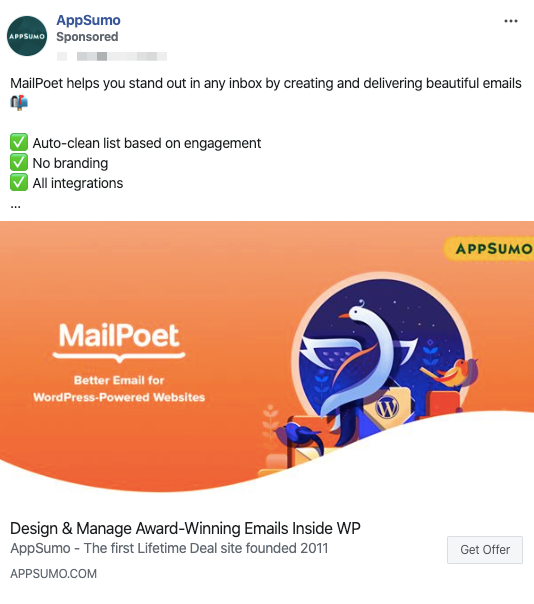

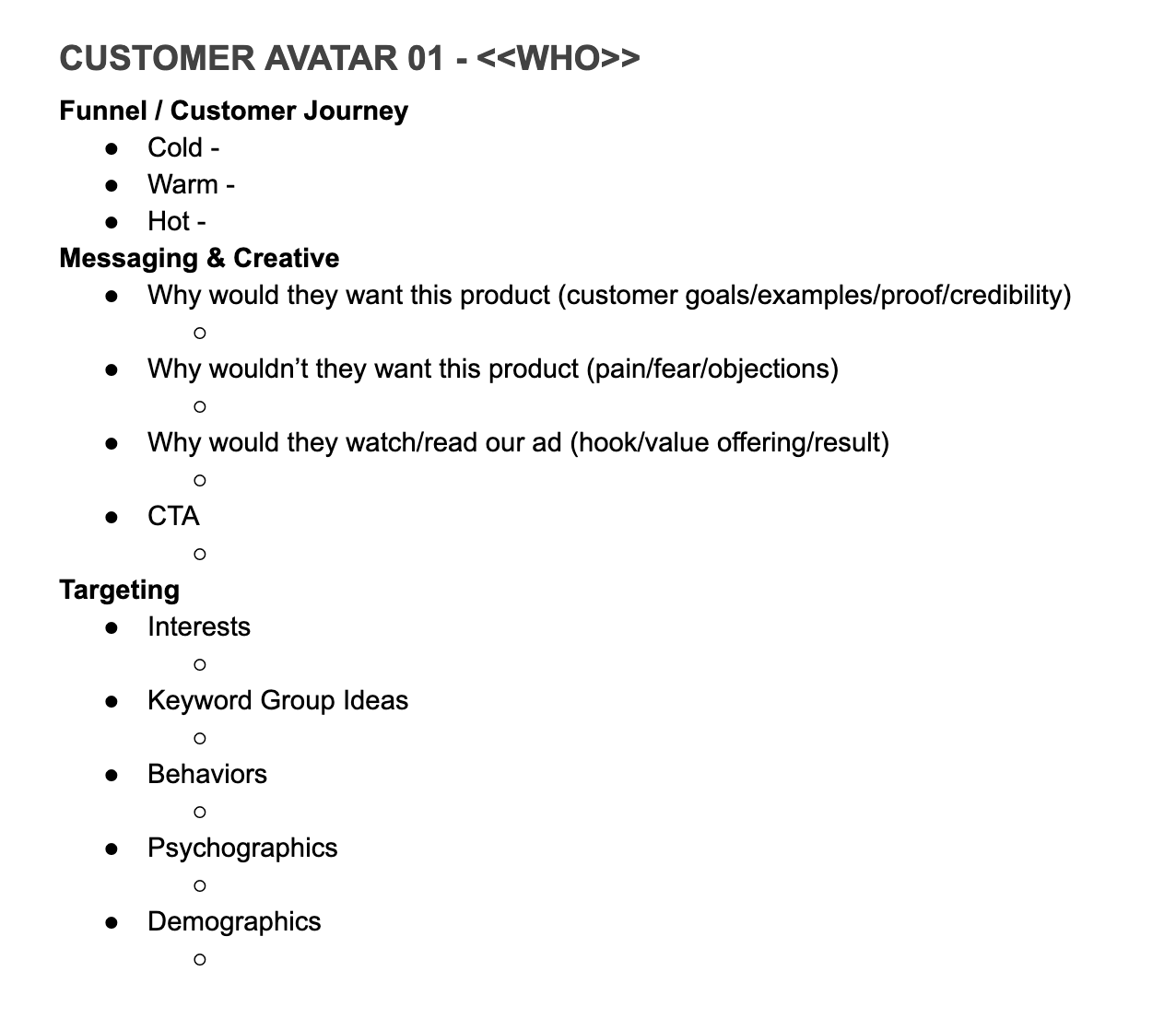
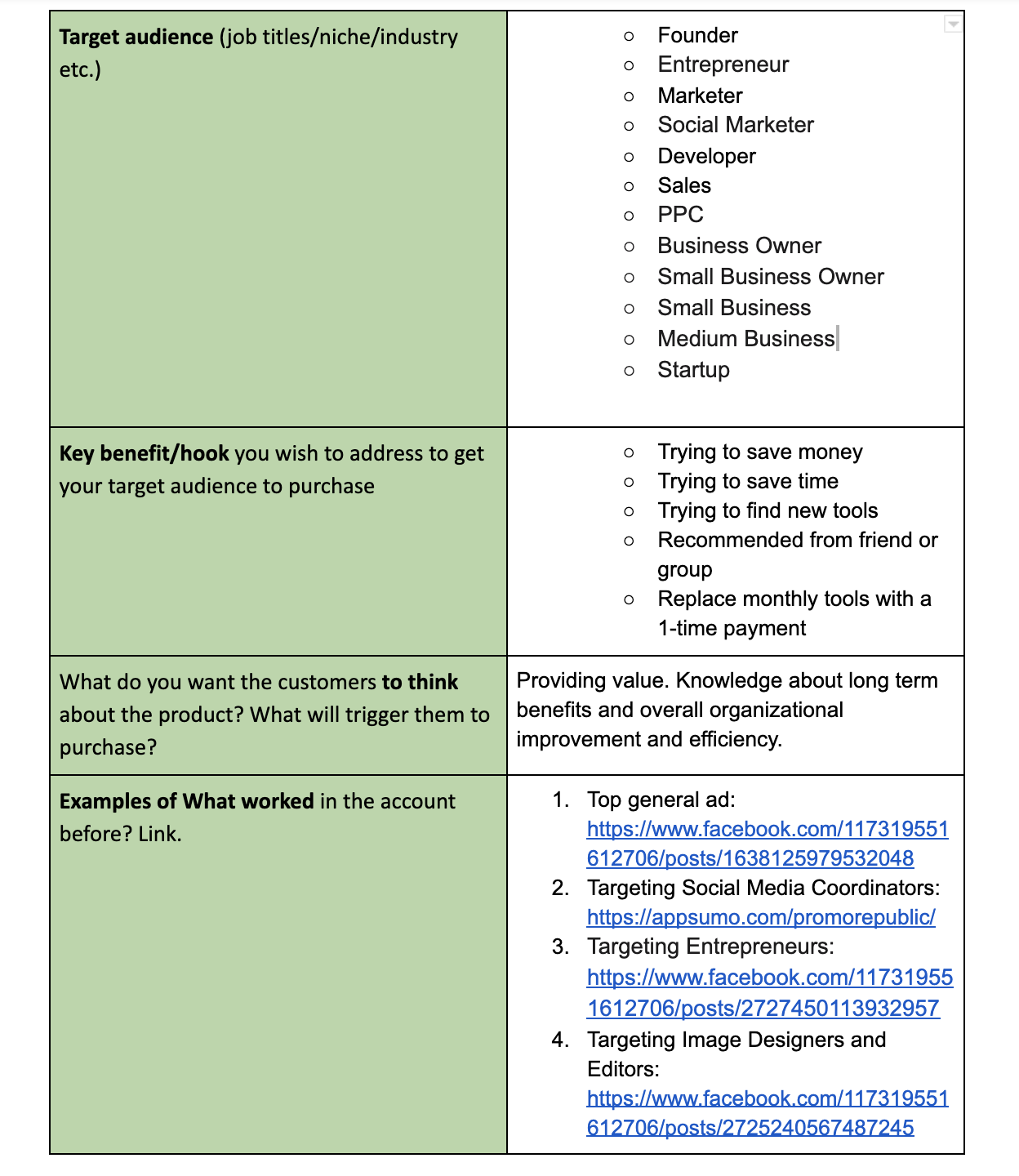
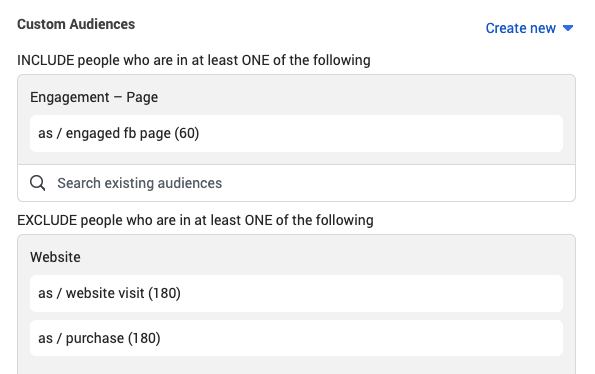
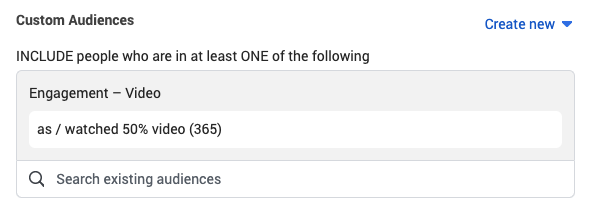
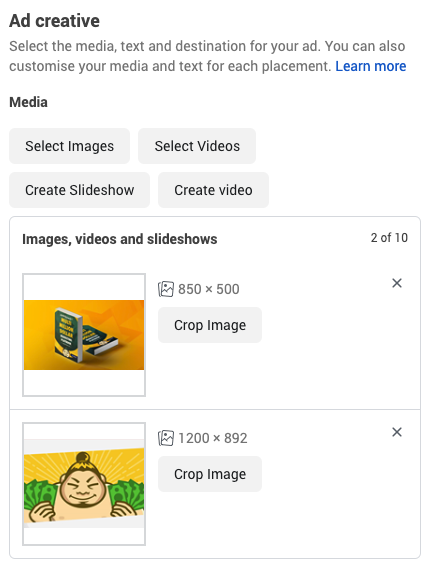
Comments